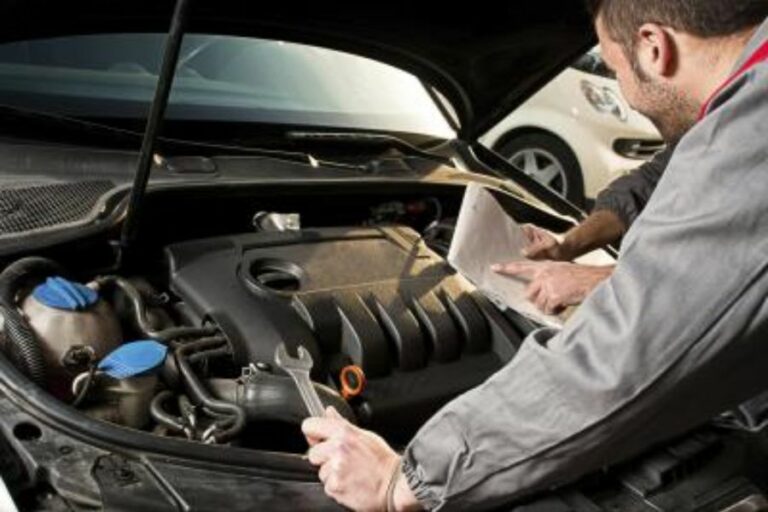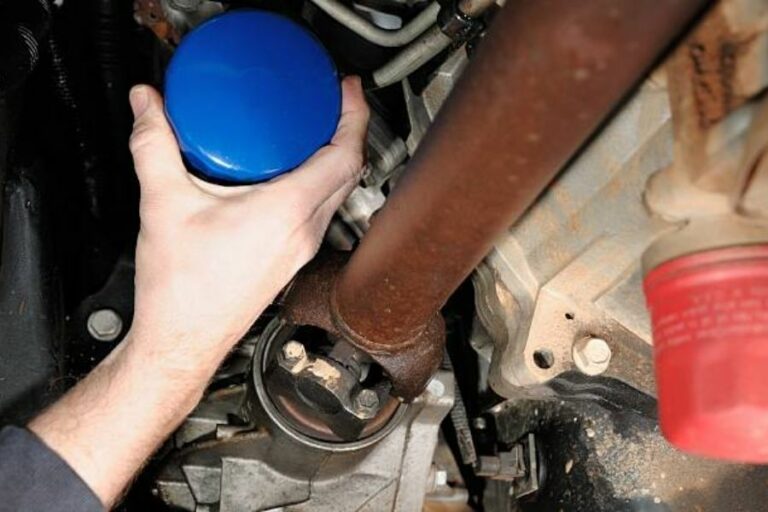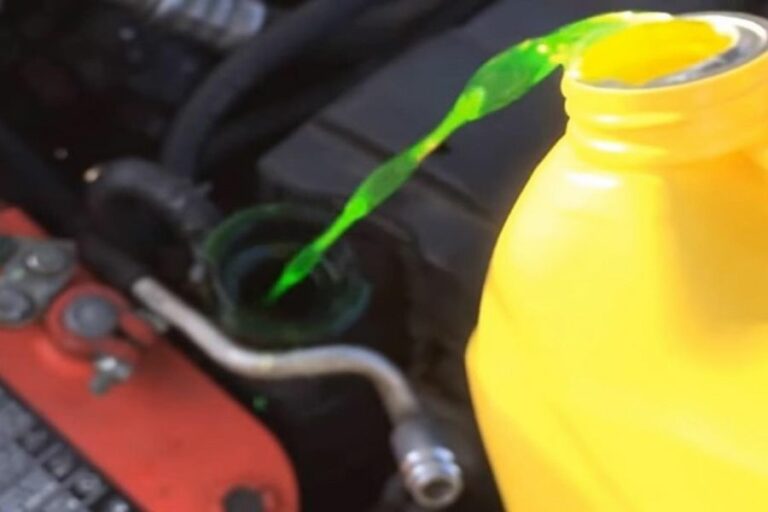NP246 Transfer Case Problems: Understanding and Resolving
The np246 t-case plays a crucial role in distributing power from the transmission to the axles. It is undoubtedly one of the most essential parts of Chevy and GMC vehicles.
If it isn’t working correctly, you will have a lot of trouble switching between two-wheel and four-wheel drives. As a result, your performance as a trucker will suffer.
When it comes to transfer case issues, the majority of the np246 transfer case problems have to do with manufacturing flaws and natural wear down. Fortunately, you can easily handle these issues and increase its lifespan and efficiency. So, let’s learn.
Common NP246 Transfer Case Problems
Over time, np246 transfer cases can experience a range of problems especially wear and tear, motor failure, etc.
It’s critical that all owners of GM SUVs and trucks are aware of the issues by keeping an eye out for symptoms.
If you catch these early, you can save money on future repairs. Here are some common NP246 problems.
- Pump Rub leading to fluid leakage (commonest).
- Encoder Motor Failure.
- Worn-out transfer case chain.
- Range Fork destroyed.
- Transfer Case Control Module Malfunction.
Symptoms of NP246 Transfer Case Problems
When your car begins to exhibit symptoms, you know there’s a problem with your np246 transfer case.
One of the common symptoms of a transfer case issue includes difficulty shifting between driving modes. The other issue includes the following:
- Cannot properly engage the four-wheel drive
- Dashboard alerts regarding the 4WD system
- Wetness or fluid pools under the vehicle
- Grinding or humming noises when you drive.
Read Also: Does AT-205 Re-Seal Cause Any Problems? Know The Dark Side
How to Diagnose and Fix NP246 Transfer Case Problems?
The np246 is a combination of various working parts. So, it is difficult to pinpoint the main culprit behind an issue.
However, once you learn to correlate the symptoms and the responsible components, fixing and identifying the problem becomes much easier.
1. Pump Rub and Fluid Leakage
In np246 transfer cases, the pump rub is common. As the pump inside pushes against the case, a hole eventually develops.
It’s a design flaw of the np246. The manufacturer had made the case out of magnesium to reduce weight. However, this made the case soft in relation to the pump material.
Meanwhile, the pump is held in a floating position inside the case with the aid of ears. With time and stress, one or more of the ears wear out.
This shifts the pump to one side, and it keeps rubbing against the soft case. The continuous rubbing eventually creates a hole in the transfer case and fluid leaks.
The fluid inside the transfer case is responsible for lubricating and cooling the chain system. Leakage of it renders the inside dry. That’s when the noises and shifting problems appear.
If your transfer case is already worn-out from the pump rub, rebuilding it is the only option.
You will have to replace the case half that has the hole. You will also put in a new pump and a ‘case saver’ to stabilize the pump.
2. Faulty Transfer Case Chain
If your transfer case isn’t leaking and the pump is healthy, the cause of the issue might be a faulty chain.
A bad chain system will create grinding noise. You will also have a tough time changing between 2WD and 4WD.
Generally, chain-driven transfer cases like the np246 are lightweight and less noisy. This is why many manufacturers chose them over older gear-driven t-cases.
The chain drive transfers power from the main drive to the auxiliary four-wheel system.
Stress, vibration, and heat wear down the chain and affect its integrity. Contaminated and low-quality ATF fluid might also contribute to the premature destruction of the chain.
If the chain has suffered sufficient damage you will have a hard time shifting between driving modes. Eventually, the chain will break down and you would have to replace it.
3. Bad Encoder Motor
When your investigation reveals the chain drive is intact, the next consideration is the encoder motor. The encoder motor moves the shift linkage to engage the mode the driver selects.
If it goes bad, you cannot put the truck in 4WD. The motor is connected to the gear reduction system and the chain drive.
It receives a signal from the TCCM when the driver wants to shift mode. The motor engages with the gear reduction system which moves the chain drive.
There are sensors associated with the encoder motor that collects data on the chain’s position. The TCCM receives this data and adjusts the motor to turn the chain and ensure the correct driving mode.
Time and workload can destroy the motor. Plus, there are common issues like overheating, bad fluid, and moisture. Damaged wiring can also prevent the encoder motor from working.
Read Also: Can A Broken Serpentine Belt Leak The Radiator Fluid? [4 Problems]
4. Range Fork Damage
If the chain, motor, and pump rub aren’t your problem, the next on the list is the range fork.
This part of the np246 is responsible for engaging the range gear. Thus, it determines whether you use the four-wheel drive in the low range or high range.
Drivers use the high-range 4WD when they are driving on slippery roads. Meanwhile, the low-range drive is handy when climbing a steep incline.
This shifting between various ranges is possible due to the range fork. The component is essentially a fork-shaped metal piece.
When the driver selects a desired 4WD mode, the TCCM sends a signal to the encoder motor.
In turn, the motor rotates a gear to move the range fork. The fork then slides and locks the range gear in a position according to the selected range.
The unnatural workload is one of the leading causes of premature damage to the range fork.
Such as driving on normal roads in low-range mode.
Or towing excessively heavy loads with your truck. Plus, there is natural wear and tear.
You can identify an issue with the fork when you fail to put your vehicle in the desired 4WD range. If the fork has suffered extensive damage, you need to replace it.
5. Transfer Case Control Module Problems
If you find nothing wrong with any of the above-mentioned components, the problem is within the TCCM.
This module receives input about the various parts of the np246 via sensors. Based on that information, it adjusts the components to engage the appropriate drive mode.
When the TCCM detects a problem with the transfer case components, it triggers a warning. You will see ‘service 4WD’ flashing on your dashboard.
When the TCCM is faulty, this message might randomly appear. You will also find the 4WD acting erratic despite new or healthy components. Heat, vibration, and other stress factors can scramble the TCCM’s codes.
In other cases, the connection between the module and the t-case might be suffering from corrosion. Reprogramming or replacing the TCCM is the available option here.
Read Also: What To Do If Fuel Pump Making Noise But Not Pumping Fuel?
Repair and Replacement Cost of NP246 Transfer Case
Installing an np246 in your GMC or Chevy can cost close to 2000$. These include the cost of the parts (90%) and the labor charges (10%).
However, the percentages can vary according to your retailer and mechanic choice.
No doubt, getting a new transfer case is a costly affair. But you can avoid it if you maintain these cheaper repairs and replacements.
| Type of Repair | Costs | Comments |
| Repair of leakage | 200$ | It can vary according to auto-repair shops. |
| Case-saver installment | 25-40$ | The mentioned cost is only for the parts. If you don’t know how to access and split an np246 t-case, you must hire professionals. |
| Chain replacement | 250-300$ | 150$ for the parts, and the rest is labor cost. |
| New shift motor encoder | 250$-300$ | Labor costs and parts price both included. But these can vary according to your shop. |
| Range Fork replacement | 200$ | Quality range forks cost around 100$ on eBay and Amazon. The rest is estimated labor costs. |
| TCCM repair | 100$-500$ | If you have to simply reprogram the module, you can do it for under 150$. However, installing a new and genuine GM TCCM will cost you 500$ (parts+labor). |
Read Also: How To Unstick Oil Pressure Relief Valve? [5 Easy Steps]
Prevention Strategies for NP246 Transfer Case Problems
An np246 issue is always bad news for GMC and Chevy drivers. Apart from the costly repair, there is also the risk of accidents. But you can help the situation by adopting a few prevention strategies-
- Any abnormal noise from the transfer case or shifting issue demands immediate attention.
- Service the t-case every 30,000 miles.
- Use high-quality transfer case fluid (Auto-Trak II is recommended).
- Install a case-saver to prevent pump rub.
- Regularly inspect for leaks.
- Grease the Slip Yoke (the splined shaft that connects the driveshaft and t-case) to prevent vibration damage.
Read Also: Why No Pressure in Clutch After Bleeding the System? (Fixed)
FAQs.
We tried our best to answer all questions that might come to mind regarding np246 problems. However, we might have missed some. Feel free to ask here.
Where will I find the NP246 in my truck?
The np246 is located on the undersurface of your vehicle. It usually lies between the transmission and the rear differential. However, the location might slightly vary according to the model and year of your truck.
Which vehicles have the NP246 transfer case?
The np246 is most common in General Motors vehicles. If you have a Chevrolet Silverado, GMC Sierra, Denali, or Yukon- it is likely to have an np246 transfer case.
What is the best fluid for the NP246 transfer case?
General Motors recommends using the GM Auto Trak II in their vehicles with 4WD. It has advanced temperature resistance and provides better lubrication. This fluid is your best option to increase the performance and longevity of your vehicle.
How can I split an NP246 transfer case?
First, drain the fluid. Now, remove the shafts, cables, and connections. As the t-case comes loose from the vehicle, take it out and mount it on a fixture. Then remove the bolts to take the two case halves apart. You can now inspect the components inside and make repairs if necessary.

![Is It Normal to Have Bubbles on Oil Dipstick? [Disclosed]](https://carfluidpro.com/wp-content/uploads/Bubbles-On-Oil-Dipstick_-How-To-Check-768x512.jpg)




